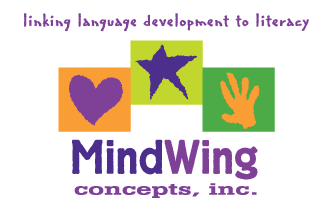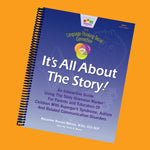Secure Checkout + FREE SHIPPING (U.S. Orders over $60)
Menu
-
- Home
-
About Us
-
The Approach
-
Linking Language & Literacy
-
Professional Learning
-
Learning Resources
-
SHOP
-
Blog
-
- About MindWing
- Our People
- Contact Us
- Your Account
- Login
-
United States (USD $)

Secure Checkout + FREE SHIPPING (U.S. Orders over $60)
Story Patch: A Great Context to Teach Narrative with Story Grammar Marker
May 26, 2011
There have been a number of apps for iOS (iPad/iPod/iPhone operating system) that have been released in recent months that seem like they were created for use with Story Grammar Marker! Digital Storytelling apps such as Story Patch allow children to create stories while having an emphasis on narrative structure, with choices about character, setting and actions. Students with language disorders will need assistance with organizing, expanding, and adding complexity to their narrative and sentence structure, and that is where you and the SGM come in!
In this video, I give a quick walkthrough of Story Patch (iPad only, currently only $.99- yes, that’s 99 CENTS) and its choices for story creation. You’ll see how its “Create a Story with Help” mode is a great opportunity...
The Zimmer Twins and Stepping Up Narrative Complexity!
March 17, 2011
I am going to open this post with a language sample obtained from a fifth grade student in 2006, an attempt to retell an episode of the series Full House.
And um something that happened was when this girl named Michelle and this guy Jesse, it was Michelle’s birthday. And Jesse and Michelle got stuck in a gas station and she missed her party.
And um they were there all day, but then finally it opened the next- no it opened a lot later. So um they went back to the house and they had their party and she got an elephant and she got to ride it and all her friends and she got, she felt better. And that’s it...

Dinosaurs, Narrative, and Flexible Thinking
March 02, 2011 2 Comments

I always love finding resources that serve as a context for addressing many speech and language-related skills. The wonderful book Edwina — The Dinosaur Who Didn’t Know She was Extinct by Mo Willems is one of those resources; it can be used to target narrative and expository formulation, as well as social thinking skills in several areas.
To begin with, Edwina is a story that will engage and delight children from early to late elementary ages, beginning with its title and the name of the main character, Reginald Von Hoobie-Doobie. Reginald has a problem...

Interactive, Visual Resources to Complement Feelings Instruction (Internal Responses)
January 31, 2011
 As stated so well in It’s All About The Story, Book I of MindWing’s Autism Collection, “Tuning into one’s own Feelings as well as the Feelings of Others is extremely problematic to children with autism. The book provides visual flip charts, discussion prompts and an introduction to the Six Universal Feelings (happy, sad, mad, scared, surprised and disgusted), as well as ways to move beyond those Universal categories to more advanced feelings vocabulary—all of these resources give SLPs a great place to start...
As stated so well in It’s All About The Story, Book I of MindWing’s Autism Collection, “Tuning into one’s own Feelings as well as the Feelings of Others is extremely problematic to children with autism. The book provides visual flip charts, discussion prompts and an introduction to the Six Universal Feelings (happy, sad, mad, scared, surprised and disgusted), as well as ways to move beyond those Universal categories to more advanced feelings vocabulary—all of these resources give SLPs a great place to start...
Kick-Off the Kick-Off
January 12, 2011

Gingerbread Characters and Settings
December 08, 2010

Using the holidays as a context for language interventions can be tough, as it’s important to be inclusive of all cultures and celebrations. From a technology perspective, there just aren’t many great interactive resources about the Festival of Lights (anyone want to make some)? Gingerbread, however, while associated loosely with Christmas, is probably fair game in the public school setting!
Now, while websites with excessive, distracting ads are often something I rule out as a potential therapy resource, sometimes sites that are actually a giant, yet somehow unobtrusive ad can be great...
